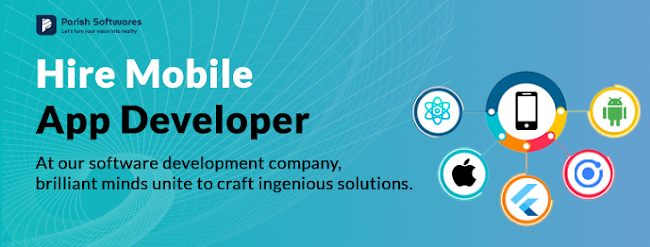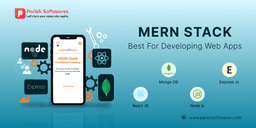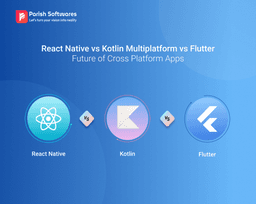React Native vs. flutter for app development, which one to choose in 2024?
In this blog post, we're going to delve deep into the heart of this ongoing debate and help you make an informed decision. Whether you're a seasoned developer looking to switch frameworks or a newcomer trying to choose the right one from the start, we've got you covered.
Flutter and React Native have emerged as top contenders in the cross-platform app development arena, each with its own set of strengths and weaknesses. To navigate this landscape effectively, we'll break down the key aspects of both frameworks, including performance, development experience, community support, and more.
So, if you're standing at the crossroads of Flutter and React Native, unsure of which path to take, keep reading. By the end of this article, you'll have a clear understanding of the pros and cons of each, enabling you to make a well-informed choice for your mobile app development endeavors in 2023. Let's dive in!
Exploring the World of Mobile App Development: Flutter vs. React Native in 2023
In this article, we'll embark on an insightful journey into the world of mobile app development, focusing on two prominent frameworks: Flutter and React Native. We'll provide a comprehensive side-by-side comparison of these frameworks, shedding light on their respective strengths, weaknesses, and showcasing notable examples of apps developed using each.
React Native vs. Flutter: A Battle Unveiled
Let's commence our exploration by diving into the heart of the Flutter vs. React Native debate. These two frameworks have been at the forefront of cross-platform app development, each offering unique advantages and challenges.
Exploring React Native: Pros and Cons
- Cross-Platform Development: React Native allows developers to write a single codebase that can be used for both iOS and Android platforms. This cross-platform compatibility significantly reduces development time and costs.
- Native-Like Performance: React Native leverages native components and modules, which ensures that the apps built with it perform almost as smoothly as natively developed apps.
- Reusability: The component-based architecture of React Native promotes code reusability. Developers can create reusable UI components, saving time and effort in development.
- Large Community and Ecosystem: React Native boasts a vast and active community of developers. This means access to a wide range of libraries, plugins, and third-party tools, making development more efficient.
- Hot Reloading: Developers can see the results of their code changes in real-time without rebuilding the entire app. This feature speeds up the development and debugging process.
- Cost-Effective: Building with React Native can be more cost-effective compared to maintaining separate codebases for iOS and Android, as it requires fewer resources.
Disadvantages of React Native:
- Limited Access to Native Features: While React Native offers a wide range of pre-built components, it may not provide access to all native features of a device. In some cases, you might need to write custom native modules.
- Performance Variability: While React Native generally offers good performance, there can be variations across different devices and operating system versions, which may require optimization efforts.
- Learning Curve: Developers familiar with JavaScript and React may find it relatively easy to start with React Native. However, those who are new to these technologies may face a steeper learning curve.
- Large App Size: React Native apps tend to have a larger file size compared to native apps because they include the JavaScript engine. This can be a concern for users with limited storage.
- Dependency on Third-Party Modules: Since React Native relies on third-party modules for many functionalities, it can be challenging to manage updates and ensure long-term compatibility.
- Less Control Over Native UI: Achieving pixel-perfect native UI designs can be challenging in React Native, as it abstracts some of the native UI elements.
In summary, React Native offers numerous advantages for cross-platform app development, including efficiency, performance, and a robust community. However, it also comes with certain limitations related to native feature access and app size. Choosing React Native depends on your specific project requirements and your team's expertise in JavaScript and React.
Exploring Flutter: Pros and Cons
In the realm of mobile app development, where innovation meets efficiency, one framework has been making waves: Flutter. Flutter is a dynamic, open-source UI software development kit created by Google. It has been revolutionizing the way developers build applications for various platforms, offering a fresh perspective on cross-platform development.
Advantages of Flutter:
- Single Codebase for Multiple Platforms: Flutter allows developers to write one codebase that can be used to create apps for both iOS and Android platforms. This eliminates the need to maintain separate codebases, reducing development time and costs.
- Native-Like Performance: Flutter employs a compiled programming language called Dart and provides a rich set of pre-designed widgets. This combination results in native-like performance, ensuring smooth and fast user experiences.
- Hot Reload: Flutter's hot reload feature enables developers to see instant updates to their code in real-time without the need for a full app restart. This greatly accelerates the development and debugging process.
- Expressive UI: Flutter offers a wide range of customizable widgets, allowing developers to create highly expressive and visually appealing user interfaces. Custom animations and complex UI elements are easier to implement.
- Strong Community and Ecosystem: Flutter has a growing and active developer community. This means access to a wealth of open-source packages, plugins, and libraries, streamlining development tasks.
- Consistent UI Across Platforms: Flutter ensures that the app's UI looks and behaves consistently on both iOS and Android devices, thanks to its custom rendering engine.
Disadvantages of Flutter:
- Lack of Native Components: Flutter does not provide access to all native device features and components out-of-the-box. Developers may need to write custom platform-specific code (platform channels) for certain functionalities.
- Learning Curve: Learning Dart, the programming language used by Flutter, might pose a challenge for developers already familiar with other languages like JavaScript. The widget-based architecture also requires developers to adapt to a different way of building UI.
- Large App Size: Flutter apps tend to have a larger file size compared to natively developed apps due to the inclusion of the Flutter engine and framework.
- Limited Libraries: While Flutter's library ecosystem is growing, it may not offer as many libraries and modules as some other mature frameworks. Developers may need to create custom solutions for certain tasks.
- Community Maturity: While the Flutter community is active and growing rapidly, it may not be as mature as communities around some other frameworks, which could impact the availability of support and resources.
- Platform Differences: Despite Flutter's goal of platform consistency, there can still be subtle differences in behavior and appearance between Flutter apps on iOS and Android. Developers need to be aware of these nuances.
In conclusion, Flutter offers several advantages, including its single codebase, performance, and expressive UI capabilities. However, it also presents challenges related to the learning curve, access to native features, and app size. The decision to use Flutter should be based on the specific requirements of your project and your team's familiarity with Dart and the Flutter framework.
What are the most popular apps in react native & flutter
React Native Apps:
- Facebook: The Facebook app itself uses React Native for some of its features. While the core functionality remains native, React Native is used to power parts of the UI.
- Instagram: Instagram, which is owned by Facebook, has also embraced React Native. Features like Instagram Shopping have been built using this framework.
- Airbnb: Airbnb, the popular vacation rental platform, uses React Native for its mobile app. This choice allows Airbnb to maintain a consistent user experience across different platforms.
- Walmart: Walmart, one of the world's largest retail companies, employs React Native for its mobile app. This helps Walmart provide a seamless shopping experience for its customers.
- Bloomberg: Bloomberg, the financial news and data giant, utilizes React Native for its mobile app. It's a prime example of how React Native can be employed in the finance and news sector.
- SoundCloud Pulse: SoundCloud Pulse is a companion app for music creators on SoundCloud. React Native powers this app, making it easier for musicians to manage their content on the platform.
Flutter Apps:
- Alibaba Group's Xianyu: Xianyu is a marketplace app similar to eBay, and it's one of the largest platforms for buying and selling second-hand items in China. It was developed using Flutter for its smooth and responsive user interface.
- Google Ads: Google Ads, a critical tool for online advertisers, used Flutter to create a more consistent and visually appealing experience across both Android and iOS platforms.
- Hamilton: The Official App: This official app for the popular musical "Hamilton" was developed using Flutter. It offers fans a chance to access exclusive content and purchase tickets.
- Reflectly: Reflectly is a journaling app that uses Flutter to provide users with a clean and engaging user interface. It focuses on mental health and personal growth.
- Tencent's Now Live: Now Live is a live streaming app developed by Tencent, a major player in the tech industry. The app is built with Flutter to ensure high performance and a consistent user experience.
The Ultimate Face-Off: React Native vs. Flutter
In the fierce showdown between React Native and Flutter, let's break down the key factors:
- Performance: Flutter takes the lead with slightly faster app loading times.
- Programming Language: React Native emerges victorious, boasting a robust developer community, abundant resources, and a wealth of prebuilt modules, frameworks, and libraries.
- Architecture: Flutter secures the win with its elegant and testable BLoC (Business Logic Component) architecture.
- Installation: React Native wins this round with a faster installation process thanks to Node Package Manager.
- UI and Development API: Flutter shines, offering native compatibility with Google and robust UI development toolkits.
- Development Time: React Native takes the crown due to the plethora of available resources.
- Code Reusability: Flutter comes out on top with a highly reusable code base.
- Quality Assurance: It's a draw, as both frameworks offer robust quality assurance capabilities.
- Release: Flutter clinches the victory with more frequent updates and releases.
- App Development Rates: Flutter emerges as the preferred choice.
So, which one should you choose? Let's explore:
When to Use Flutter:
- When your app demands high performance and an array of features.
- When you're racing against time to hit the market.
- When customization is key.
When to Use React Native:
- When 3D rendering is essential.
- When you require multiplatform support.
In the grand showdown of React Native vs. Flutter, both stand tall as winners in their own right. Your decision should hinge on project requirements, budget, feature complexity, development timeline, target platforms, and more.











